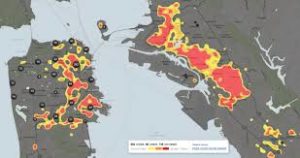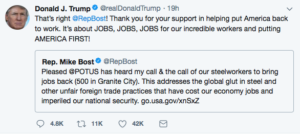Today’s Upshot (NYT 03/19/18) calls attention to an extensive study showing that black men who enjoy the same economic and academic advantages as white men still do not enjoy the same compensation on today’s job market. The study, led by researchers at Stanford, Harvard and the Census Bureau, “debunks a number of other widely held hypotheses about income inequality. Gaps persisted even when black and white boys grew up in families with the same income, similar family structures, similar education levels and even similar levels of accumulated wealth.” The executive summary of the study concludes: “initiatives whose impacts cross neighborhood and class lines and increase upward mobility specifically for black men hold the greatest promise of narrowing the black-white gap.”
Really? Here’s the problem. If I am an employer and I am interested in winning the highest value for shareholders, I will use every legal means — including race, gender, nationality, immigration status, and sexual preference — to draw down factor costs.
Yes, there is a cultural factor. Regions of the country that are most thoroughly integrated, most educated, and most wealthy show less racial bias than regions that are less integrated, less well educated, and least wealthy. Less bias; but not no bias. “In low-poverty neighborhoods, two types of factors are most strongly associated with better outcomes for black men and smaller black-white gaps: low levels of racial bias among whites and high rates of father presence among blacks.”
Yes, wealth matters. So, too, does culture; a culture in which whites display lower levels of racial bias. But isn’t this a tautology? Where there is less racial bias, employers display less racial bias in compensation packages. Got it.
The greatest movement not simply in wealth, but against the culture of racism, came with the federal Civil Rights legislation of 1964 and 1965; imposed “from above”; enforced “from above”; carrying penalties serious enough to bring movement to America’s three-century old “peculiar institution.” Did this “intervention into free markets” (M Friedman, Capitalism and Freedom 1962) give rise to inefficiencies? Sure. Any intervention into any system driven by inertia necessarily impedes its original course and, measured in terms of that course, generates inefficiencies. But, since when did efficiency become the universal standard against which we should or should not enact policies? Black men are systemically discriminated against; yes, the culture needs to change; yes, wealth makes all change easier. But, black men are being systemically discriminated against. Yes, any intervention gives rise to inefficiencies. But, black men are being discriminated against.

The question is the role the public might play in eliminating racial discrimination. Or, put differently, we need to ask: which “initiatives” might have “impacts cross neighborhood and class lines” and give rise to “increased upward mobility specifically for black men hold the greatest promise of narrowing the black-white gap”? Because identity can be used and is being used invidiously, today, in private markets in order to increase marginal benefits, it is up to the public to impose penalties upon private entities significant enough to deter and eliminate the behavior.
Milton Friedman mistakenly supposed that the marginal cost of racial preference would outweigh the marginal benefit and, therefore, that the free market, left to itself, would resolve the problem of racial discrimination (op. cit. 111-115). Fifty-six years later, we are seeing a grand reversal of 1964-65 all across the US; and equally obnoxious discrimination all across Europe. Men (+ PM May) have decided to generate efficiency at the expense of the marginalized. No surprise here. It is clear therefore that the market has failed to eliminate discrimination. Not because the market has “failed” in general, but because it has “succeeded.” It has succeeded taking advantage of difference as a marginal benefit for shareholders: differences in race, ethnicity, gender, and sexual preference. This is what free markets do. This is how they are supposed to function.
That said, huge efficiencies are being lost when over half the workforce is stuck with substandard education, health, no political voice and little social security. Efficiency mongers need therefore to look beyond the short-term inefficiencies generated by social change and take advantage of the long-term efficiencies they can win by implementing a strict policy of non-discrimination, specially in wages and benefits. And the public should stand ready to impose serious costs on private entities that fail to eliminate discrimination in their wage and benefit packages.



